| A
R T I C L E S |
New Collectibles •05/25 - NECA Sesame Street: Count Von Count Ultimate Action Figure
•04/25 - Reaction Sesame Street: Big Bird and Snuffy •03/25 - NECA Sesame Street: Ernie Ultimate Action Figure, Bert Ultimate Action Figure
•03/25 - Boss Studios Fraggle Rock: Boober Action Figure, Wembley Action Figure, Mokey Action Figure, Sprocket Action Figure •08/24 - Reaction Sesame Street: Big Bird, Mr. Hooper, Sherlock Hemlock, Super Grover |
||
|
|
|

Understanding Widescreen & Pan-and-Scan
Discover what may be missing from your favorite Henson Films
By James
V. Carroll
October 14, 2002
Buena Vista Home Video released another cropped DVD last week when the long-awaited "Muppet Christmas Carol" hit store shelves. This continues the company's new "cropped-only" precedent for their smaller DVD releases. Many fans voiced their concern to Disney and Henson after the release of "Muppet Treasure Island" last spring. False hopes were raised when Amazon.com mistakenly stated that "The Muppet Christmas Carol" would contain both versions. Such practices have set off quite a debate.
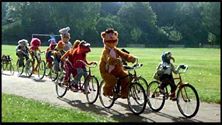 To
grasp the importance of this, you must first understand the difference
between the formats. Widescreen (also referred to as letterbox) is a video
format that fits the entire panoramic width of a motion picture into the
more square-shaped frame of a television screen. Films are commonly shot
in a wider aspect ratio than a television can hold. A movie screen's dimensions
are usually around 1.85:1 or 2.35:1 compared to a home system's shorter
1.33:1. Televisions cut out our peripheral vision, we see in panorama.
To
grasp the importance of this, you must first understand the difference
between the formats. Widescreen (also referred to as letterbox) is a video
format that fits the entire panoramic width of a motion picture into the
more square-shaped frame of a television screen. Films are commonly shot
in a wider aspect ratio than a television can hold. A movie screen's dimensions
are usually around 1.85:1 or 2.35:1 compared to a home system's shorter
1.33:1. Televisions cut out our peripheral vision, we see in panorama.
Until recently, most films were cropped when they hit video. This resulted
in about 30-50% of the image being cut away to fit the television frame.
DVDs popularized the anamorphic widescreen option for the commercial market.
Before this, fans had to search for letterboxed videos or ancient Laserdiscs
and pay top dollar. Ironically, some films are now released with no Pan-and-Scan
version.
Pan-and-Scan is the standard method of cropping, providing the viewer with a jarring, mechanical scan across the screen when both sides of the image are important in a particular shot. This creates a sort of unnatural ping-pong effect. Much information, sometimes crucial to the film, is lost or distorted this way. Actors who are speaking are often cut out of the frame in order to fit the television. Sometimes visuals are vertically squished in key shots where the horizontal information must be seen all at once (like names in credit sequences).
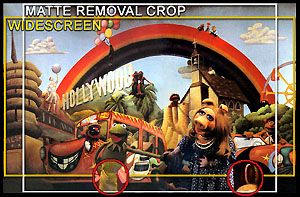 |
|
Matte removal cropping is less drastic than traditional pan-and-scan, but Kermit's sock, Frank's head and other unintended elements are visible. Widescreen is obviously the intended format. |
A popular transfer technique sometimes used involves removing the widescreen matting of a film that is shot on a larger scale (like Super35). Many motion pictures are shot in a large format to later be masked in the widescreen format. This method can be cheaper to shoot than pre-matted film stock. Each shot is arranged with the intention to be masked This method often exposes information the director never intended the audience to see: like the sock of a puppet, the arm going into it or even the puppeteer's head The sides are still substantially sliced in this sloppy method, but far less than a straight crop. All this work to avoid a couple of black bars that are forgotten five minutes into the movie.
It is strange that Disney chose to alienate an entire segment of their customers, especially with a built-in older fan base. The other four Muppet films, issued by Disney competitor Columbia Tri-Star, contain both widescreen and cropped versions. The six film series has two mismatched members. Even the new kid-vid, "Kermit's Swamp Years" received the widescreen treatment. Disney executives admit to having the anamorphic widescreen transfers so this decision must be due to lack of faith in the Muppet fan. They claim the public is not interested. Columbia Tri-Star apparently feels today's kids are savvier than Disney. Competitor Warner Brothers almost discarded the widescreen version of "Willy Wonka and the Chocolate Factory" until the public demanded it. Muppet fans tried to take such action, but the pleas fell on deaf mouse ears.
There have been concerns that including both versions on one side of a DVD will cause compression issues resulting in a lower quality picture. Extra features and footage could be lost as well, and these discs do have some great extras. There are solutions. The compression issue would not likely bother those who don't care for widescreen. They probably wouldn't notice. The company could issue an alternate collector's edition widescreen version or they could simply utilize the opposite side of the disc instead of printing a silkscreen, a common practice on DVD releases. A dual layer disc can fit up to 5 hours of material. That would leave nearly two hours for special features, but it is slightly more expensive to produce. There is always mail order. Never underestimate the tenacity of the cinemaphile.
Eventually more people will purchase wider monitors and all of these films will be reissued to fit them. Anamorphic widescreen DVDs are designed with this technology in mind. The viewer can zoom the film to fit the area without cutting off any information. Pan-and-Scan versions will result in gray bars on either side of the screen. This leads me to wonder if old television programs will someday be cropped to fit the widescreen format!
Anyone who appreciates a film enough to buy it should want to see it the way the director intended. You wouldn't slice into a Picasso to fit some sort of arbitrary frame; the same should be true for film. I'm not saying that every movie is a work of art, but they don't deserve to be disrespectfully slashed. Whatever side of the debate you fall on, one thing is certain: as consumers, we deserve to have the option.
![]()
A Closer Look
These are actual, UNRETOUCHED, widescreen and Pan-and-Scan images. The black bars above and beneath the image do not appear because they only exist on a television monitor. Much of the video image is lost in the pan-and-scan version. Some shots merely crowd the frame while others completely slice away main characters. Poor Floyd is pushed out of the frame in the Great Muppet Caper, a Skeksis has a battle with himself in The Dark Crystal and the beautiful scene elements are amputated from Labyrinth along with David Bowie. Not only does it ruin the film, it is also disrespectful to the director.
|
The
Great Muppet Caper
|
||
|
Original
Widescreen (1.85:1)
|
Pan-and-Scan
(1.33:1)
|
|
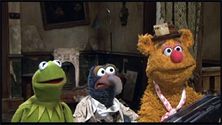 |
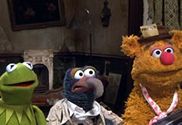 |
|
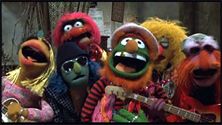 |
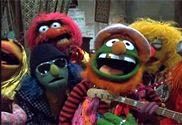 |
|
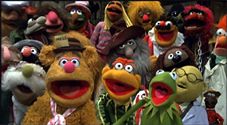 |
 |
|
![]()
|
The
Dark Crystal
|
||
|
Original
Widescreen (2.35:1)
|
Pan-and-Scan
(1.33:1)
|
|
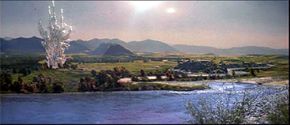 |
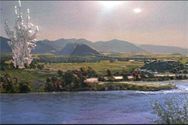 |
|
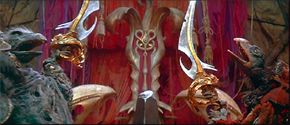 |
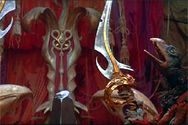 |
|
![]()
|
Labyrinth
|
||
|
Original
Widescreen (2.35:1)
|
Pan-and-Scan
(1.33:1)
|
|
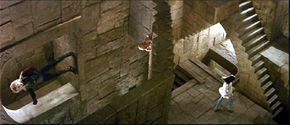 |
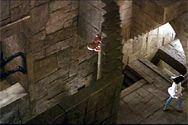 |
|
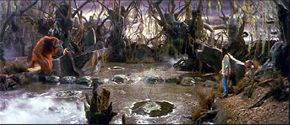 |
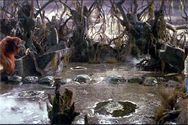 |
|
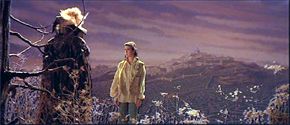 |
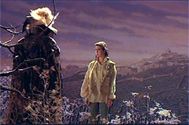 |
|
|
|
|
home | news | collectibles | articles | forum | guides | radio | cards | help
Fan site Muppet Central created by Phillip Chapman. Updates by Muppet
Central Staff. All Muppets, Bear
Muppet Central exists to unite fans of the Muppets around the world. |